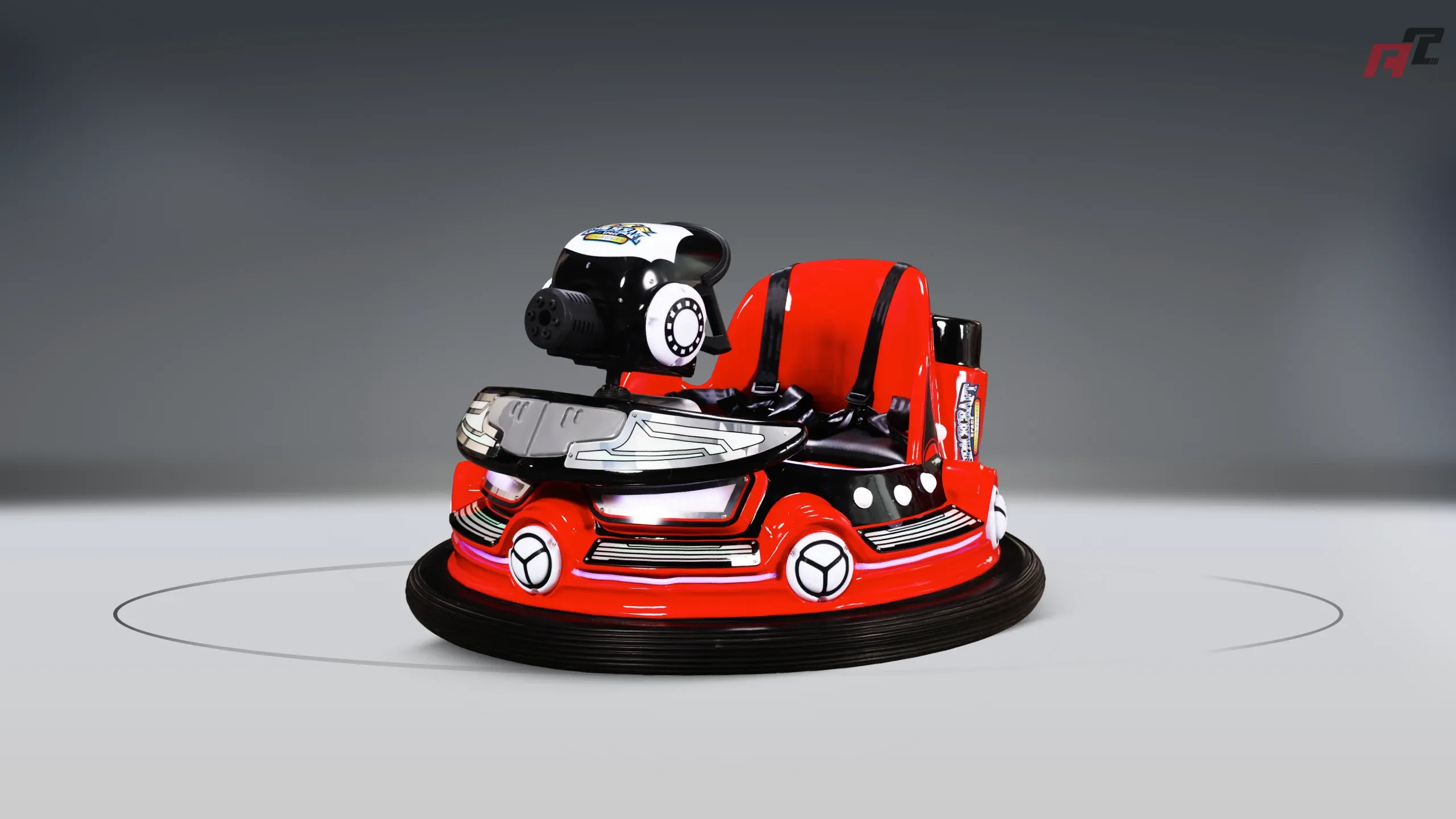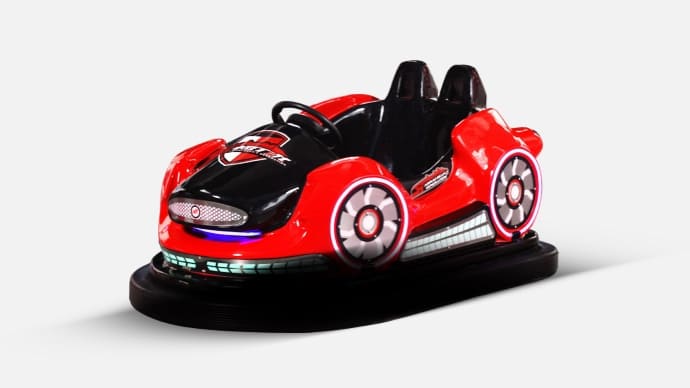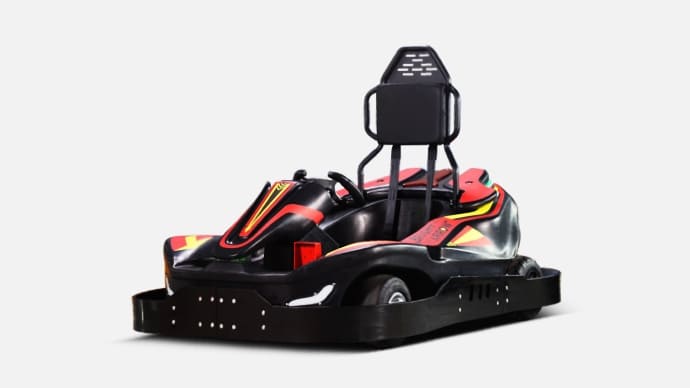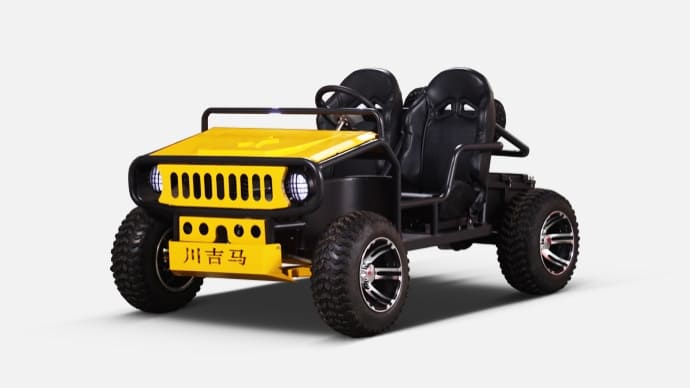مقارنة بين بطاريات الرصاص الحمضية وبطاريات الليثيوم لسيارات التصادم
- مقارنة بين بطاريات الرصاص الحمضية وبطاريات الليثيوم لسيارات التصادم
- لماذا تعتبر البطارية المناسبة أمرًا مهمًا لأسطول سيارات الصدم التي تعمل بالبطارية
- أنواع البطاريات الشائعة المستخدمة في سيارات التصادم
- كثافة الطاقة والوزن - لماذا يفوز الليثيوم غالبًا من حيث الأداء
- وقت التشغيل والسعة القابلة للاستخدام - الاختلافات العملية أثناء التشغيل
- دورة الحياة وتكلفة دورة الحياة - النظرة المالية طويلة الأجل
- سرعة الشحن وإنتاجية المكان
- الصيانة والمناولة والعمل التشغيلي
- السلامة والسلوك الحراري للمعالم السياحية العامة
- الاعتبارات البيئية وإعادة التدوير
- التكلفة الأولية مقابل التكلفة الإجمالية للملكية - جدول مقارن بسيط
- مثال: مقارنة بين حزمتين 48 فولت لسيارة ممتصة للصدمات
- اعتبارات التنفيذ لأماكن الترفيه
- أنظمة الصيانة وأفضل الممارسات التشغيلية
- عندما قد يظل الرصاص الحمضي خيارًا عمليًا
- لماذا تتجه العديد من الأماكن الحديثة إلى استخدام الليثيوم في سيارات التصادم؟
- نبذة عن ANCHI Amusement — شريك في مجال الألعاب التي تعمل بالبطاريات
- قائمة التحقق من القرار لاختيار تقنية البطارية لسيارات الصدم
- الخلاصة - توصية متوازنة لمشغلي سيارات التصادم
- الأسئلة الشائعة - أسئلة شائعة حول بطاريات سيارات التصادم
- س: ما هي المدة التي تستطيع فيها بطارية الليثيوم تشغيل سيارة الصادم؟
- س: هل يمكنني تحويل سيارات الصدم الحالية من الرصاص الحمضي إلى الليثيوم؟
- س: هل بطاريات الليثيوم آمنة في الأماكن العامة؟
- س: ما هي البطارية التي تعطي أفضل عائد على الاستثمار؟
- س: كيف يمكنني تخزين البطاريات الاحتياطية؟
- س: من يستطيع مساعدتي في تصميم حل البطارية الأمثل لسياراتي الصادمة؟
مقارنة بين بطاريات الرصاص الحمضية وبطاريات الليثيوم لسيارات التصادم
لماذا تعتبر البطارية المناسبة أمرًا مهمًا لأسطول سيارات الصدم التي تعمل بالبطارية
اختيار مصدر الطاقة الصحيح لـبطاريةسيارة الصدميؤثر التشغيل على وقت الركوب، وعبء الصيانة، وحركة الزوار، وسلامة الموقع، والربحية على المدى الطويل. يحتاج المشغلون إلى بطاريات توفر وقت تشغيل ثابتًا، وسرعة في إنجاز الأعمال، ووقت توقف منخفضًا، ودورات حياة متوقعة - كل ذلك مع الالتزام بمعايير السلامة. تُقارن هذه المقالة، المكتوبة من منظور شركة ANCHI Amusement، الشركة الرائدة في هذا المجال، بين تقنيات بطاريات الرصاص الحمضية وبطاريات الليثيوم لتتمكن من اختيار الخيار الأمثل لسيارتك.سيارات الصدم,سيارات الكارتوالمعالم السياحية العائلية.
أنواع البطاريات الشائعة المستخدمة في سيارات التصادم
كانت معظم سيارات التصادم الداخلية والخارجية تستخدم بطاريات الرصاص الحمضية (المغمورة، أو AGM، أو الهلامية) تقليديًا. في السنوات الأخيرة، برزت فوسفات حديد الليثيوم (LiFePO4) كأفضل مادة كيميائيّة لليثيوم في تطبيقات ألعاب الملاهي نظرًا لسلامتها واستقرارها وعمرها الطويل. في هذا الدليل، يُشير مصطلح "الليثيوم" في المقام الأول إلى تقنية LiFePO4 ما لم يُنص على خلاف ذلك.
كثافة الطاقة والوزن - لماذا يفوز الليثيوم غالبًا من حيث الأداء
تُحدد كثافة الطاقة مقدار الطاقة التي تُخزنها البطارية لكل كيلوغرام. عادةً ما تُوفر بطاريات LiFePO4 ما بين 90 و160 واط/كجم، بينما تتراوح سعة بطاريات الرصاص الحمضية المُغلقة النموذجية بين 30 و50 واط/كجم.سيارة تعمل بالبطاريةوهذا يعني أن حزمة الطاقة المكافئة في الليثيوم سوف تزن ما يقرب من ثلث إلى نصف حزمة الرصاص الحمضية، مما يحسن من التحكم في السيارة، ويقلل من إجهاد الهيكل ويجعل التركيب أسهل.
وقت التشغيل والسعة القابلة للاستخدام - الاختلافات العملية أثناء التشغيل
بطاريات الرصاص الحمضية حساسة لعمق التفريغ (DoD). وللحفاظ على عمرها الافتراضي، يستخدم المشغلون عادةً 50% فقط من السعة الاسمية لحزمة الرصاص الحمضية. تدعم بطاريات LiFePO4 تفريغًا أعمق بأمان - 80-100% من السعة القابلة للاستخدام حسب إعدادات نظام إدارة البطارية (BMS). وهذا يعني فترات تشغيل أطول لكل شحنة.سيارة تعمل بالبطاريةمع نفس تصنيف القدرة الاسمية.
دورة الحياة وتكلفة دورة الحياة - النظرة المالية طويلة الأجل
يُعدّ عمر دورة الشحن (عدد دورات الشحن/التفريغ الكاملة التي يمكن للبطارية توفيرها) عاملاً رئيسياً في التكلفة الإجمالية للملكية (TCO). تتراوح نطاقات الاستخدام النموذجية بين: بطاريات الرصاص الحمضية من 300 إلى 800 دورة (تختلف باختلاف نوع وعمق التفريغ)؛ وبطاريات LiFePO4 من 2000 إلى 5000 دورة. على الرغم من أن تكلفة الليثيوم الأولية أعلى لكل كيلوواط/ساعة، إلا أن عمره الأطول يعني استبدالات أقل، وغالباً ما يكون إجمالي تكلفته أقل على مدى 5-8 سنوات في العمليات التجارية مثل سيارات التصادم.
سرعة الشحن وإنتاجية المكان
تقبل بطاريات LiFePO4 تيارات شحن أعلى، ويمكن شحنها بشكل أسرع وأمان من بطاريات الرصاص الحمضية عند استخدام شواحن ونظام إدارة بطارية مناسبين. أوقات الشحن الكامل النموذجية: بطاريات الرصاص الحمضية من 6 إلى 8 ساعات لشحن دورة عميقة؛ وبطاريات LiFePO4 من ساعة إلى ثلاث ساعات لمعظم إعدادات الشحن العملية. يُقلل الشحن السريع من عدد البطاريات الاحتياطية اللازمة للحفاظ على إنتاجية عالية في صالات الألعاب المزدحمة أو مراكز الترفيه العائلي.
الصيانة والمناولة والعمل التشغيلي
تتطلب بطاريات الرصاص الحمضية (وخاصةً الأنواع المغمورة) ريًا منتظمًا وتنظيفًا للأطراف وشحنًا متوازنًا. تُقلل بطاريات AGM وGel من بعض الصيانة، لكنها تبقى أثقل وزنًا وأكثر حساسية للتلف الناتج عن حالة الشحن الجزئي. أما بطاريات LiFePO4، فهي لا تحتاج إلى صيانة تقريبًا - لا تحتاج إلى ري، وموازنة ضئيلة في حال وجود نظام إدارة البطارية (BMS)، ومخاطر أقل لتسرب الأحماض. بالنسبة للمشغل، يُقلل تقليل مهام صيانة البطارية من تكلفة العمالة ويُقلل من احتمالية حدوث أعطال تشغيلية.
السلامة والسلوك الحراري للمعالم السياحية العامة
تتميز بطاريات LiFePO4 بثباتها الحراري وانخفاض احتمالية اشتعالها مقارنةً بالعديد من أنواع الليثيوم الأخرى. تُعدّ بطاريات LiFePO4 المُصممة هندسيًا بشكل صحيح، والمزودة بنظام إدارة البطاريات (BMS) وأغطية واقية، آمنة للاستخدام في ألعاب التسلية. قد يُطلق الرصاص الحمضي غاز الهيدروجين عند الشحن الزائد، كما يحتوي على حمض أكّال، مما يُشكل خطرًا على السلامة في الأماكن العامة في حال تلف الغلاف. يتطلب كلا النوعين أنظمة شحن وتهوية سليمة، إلا أن LiFePO4 يُوفر هامش أمان مُحسّن في الاستخدام العادي.
الاعتبارات البيئية وإعادة التدوير
تتميز بطاريات الرصاص الحمضية بقابليتها العالية لإعادة التدوير، حيث تتوفر بنية تحتية راسخة لإعادة التدوير، إلا أنها تحتوي على رصاص سام وحمض كبريتيك، مما يُشكل مخاطر بيئية وصحية في حال سوء التعامل معها. تحتوي بطاريات الليثيوم على معادن ثقيلة سامة أقل، ولكنها تتطلب مرافق إعادة تدوير متخصصة لا تزال تتوسع عالميًا. من الناحية البيئية، فإن العمر الأطول (عدد مرات الاستبدال الأقل) والكيمياء الأكثر أمانًا تجعل بطاريات LiFePO4 خيارًا جذابًا للمشاريع المستدامة.سيارة تعمل بالبطاريةالعمليات.
التكلفة الأولية مقابل التكلفة الإجمالية للملكية - جدول مقارن بسيط
فيما يلي مقارنة عملية للمشغلين. الأرقام إرشادية وتمثل نطاقات صناعية نموذجية؛ وتختلف القيم الدقيقة باختلاف المورّد وطراز البطارية والسوق.
| متري | الرصاص الحمضي (VRLA/AGM) | LiFePO4 (الليثيوم) |
|---|---|---|
| كثافة الطاقة (واط/كجم) | 30–50 | 90–160 |
| وزارة الدفاع قابلة للاستخدام | 30-50% (موصى به) | 80-100% (مع BMS) |
| دورة الحياة | 300–800 دورة | 2000-5000 دورة |
| الوقت النموذجي للشحن الكامل | 6-8 ساعات | 1-3 ساعات |
| صيانة | متوسط إلى مرتفع (سقي، تنظيف) | منخفض (BMS، فحوصات عرضية) |
| التكلفة الأولية (لكل كيلوواط/ساعة) | منخفض إلى متوسط | متوسط-عالي |
| التكلفة الإجمالية المقدرة للملكية (5-8 سنوات) | أعلى بسبب الاستبدالات والعمالة | أقل بسبب العمر الطويل والصيانة الأقل |
| تأثير الوزن على السيارة | عالية (حزم أثقل) | منخفضة (حزم أخف) |
| السلامة (الاستخدام العادي) | جيد إذا تم الحفاظ عليه؛ مخاطر الحمض والهيدروجين | جيد جدًا (LiFePO4 مستقر) مع BMS |
مثال: مقارنة بين حزمتين 48 فولت لسيارة ممتصة للصدمات
مثال عملي لمساعدة المشغلين على تصور الاختلافات عند تصميمسيارة تعمل بالبطاريةنظام:
- خيار الرصاص الحمضي: بطارية رصاص حمضية مغمورة ٤٨ فولت، ٢٠٠ أمبير/ساعة، طاقة اسمية ≈ ٩.٦ كيلوواط/ساعة، قابلة للاستخدام بنسبة ٥٠٪ من الحمل ≈ ٤.٨ كيلوواط/ساعة. الوزن حوالي ٢٥٠-٣٥٠ كجم، حسب طراز البطارية.
- خيار LiFePO4: 48 فولت، 100 أمبير/ساعة، طاقة اسمية ≈ 4.8 كيلوواط/ساعة، صالحة للاستخدام بنسبة 90% ≈ 4.3 كيلوواط/ساعة. الوزن حوالي 50-80 كجم، حسب نوع الخلية.
يوفر كلاهما طاقة قابلة للاستخدام مماثلة في هذا التكوين، ولكن مجموعة الليثيوم أخف وزناً بشكل كبير ويتم شحنها بشكل أسرع، مما يحسن ديناميكيات الركوب ويقلل من عبء البنية التحتية للشحن.
اعتبارات التنفيذ لأماكن الترفيه
عند تبديل أو اختيار البطاريات لجهازسيارة تعمل بالبطاريةالأسطول، ضع في اعتبارك النقاط العملية التالية:
- قم بمطابقة الجهد الاسمي للبطارية مع وحدة التحكم في المحرك وأنظمة السيارة (الأنظمة الشائعة هي 24 فولت، 36 فولت، 48 فولت).
- تأكد من أن الشواحن متوافقة مع كيمياء البطارية وتتضمن ملفات تعريف الشحن المناسبة وميزات السلامة.
- استخدم نظام إدارة البطاريات (BMS) مع موازنة الخلايا وحماية الجهد الزائد/الناقص ومراقبة درجة الحرارة لمجموعات الليثيوم.
- قم بتصميم حاويات آمنة للبطاريات مع حماية من الاهتزاز وسهولة الوصول للاستبدال والتهوية الكافية عند الحاجة.
- قم بالتخطيط لقطع الغيار بناءً على وقت الشحن والإنتاجية: غالبًا ما يؤدي شحن الليثيوم بشكل أسرع إلى تقليل عدد قطع الغيار المطلوبة.
أنظمة الصيانة وأفضل الممارسات التشغيلية
بالنسبة لبطاريات الرصاص الحمضية: حدد مواعيد الري، وحافظ على نظافة أطراف التوصيل، وأجرِ اختبارات حمل منتظمة. بالنسبة لبطاريات LiFePO4: تحقق من سجلات نظام إدارة البطارية (BMS)، وتأكد من ضبط البرامج الثابتة/الشواحن بشكل صحيح، وأجرِ اختبارات سعة دورية. في كلتا الحالتين، درّب الموظفين على التعامل الآمن وإجراءات الطوارئ. يُطيل برنامج الصيانة الاستباقية عمر البطارية ويُحسّن السلامة في الأماكن العامة.
عندما قد يظل الرصاص الحمضي خيارًا عمليًا
قد يكون الرصاص الحمضي الخيار الأمثل للمنشآت ذات السعة المحدودة جدًا أو المنشآت المؤقتة ذات وقت التشغيل اليومي المنخفض والميزانيات الأولية المحدودة. إذا توافرت لدى المنشأة قنوات إعادة تدوير موثوقة وفريق عمل قادر على إدارة صيانة الرصاص الحمضي، فإن انخفاض التكلفة الأولية وشبكات الموردين القائمة قد يجعلان الرصاص الحمضي مناسبًا للعمليات الصغيرة أو المنشآت التجريبية.سيارة تعمل بالبطاريةجاذبية.
لماذا تتجه العديد من الأماكن الحديثة إلى استخدام الليثيوم في سيارات التصادم؟
إن ارتفاع معدل نقل البيانات، والرغبة في خفض تكاليف العمالة، وقيود المساحة والوزن، والكفاءة من حيث التكلفة على المدى الطويل، هي عوامل تدفع إلى الانتقال إلى بطاريات LiFePO4. كما أن الشحن الأسرع، والكيمياء الأكثر أمانًا، ودورة الحياة الأطول بكثير تتوافق مع أهداف المشغلين لتقليل فترات التوقف عن العمل وتكاليف التشغيل المتوقعة.
نبذة عن ANCHI Amusement — شريك في مجال الألعاب التي تعمل بالبطاريات
أنشي للترفيه هي إحدى الشركات الصينية الرائدة في تصنيع معدات الترفيه، والتي تشمل سيارات التصادم، وسيارات الكارت، ومركبات الدفع الرباعي، بالإضافة إلى البحث والتطوير، والإنتاج، والمبيعات، وخدمات ما بعد البيع. نصمم مواقع ترفيهية متكاملة من الفكرة إلى التنفيذ، وندير خطوط تجميع متعددة على مساحة إنتاج تزيد عن 5000 متر مربع. يساعد فريقنا، الذي يضم أكثر من 30 فنيًا ماهرًا، المواقع الترفيهية على اختيار نظام الدفع والبطارية المناسبين لضمان تجربة ترفيهية آمنة وموثوقة ومربحة. للحصول على حلول مصممة خصيصًا وحلول مخصصة،سيارة تعمل بالبطاريةالتصاميم، قم بزيارة https://www.anchiamusement.com/.
قائمة التحقق من القرار لاختيار تقنية البطارية لسيارات الصدم
استخدم قائمة المراجعة القصيرة هذه قبل الالتزام بشراء البطاريات:
- هل الأولوية لتكلفة أولية أقل أم لتكلفة إجمالية أقل للملكية؟
- ما هو وقت التشغيل اليومي المتوقع ومعدل ذروة الضيف لديك؟
- هل يعد وزن السيارة عاملاً حاسماً في ديناميكيات القيادة والسلامة؟
- هل لديك موظفين مدربين على صيانة حمض الرصاص أو تفضل الأنظمة التي تتطلب صيانة منخفضة؟
- هل يدعم الشاحن والبنية التحتية الكهربائية لديك الشحن السريع بالليثيوم؟
- هل تتوفر قنوات إعادة التدوير والتخلص من المواد الكيميائية التي اخترتها؟
الخلاصة - توصية متوازنة لمشغلي سيارات التصادم
بالنسبة لمعظم أماكن الترفيه الحديثة، تعد بطاريات LiFePO4 (الليثيوم) الخيار الأفضل على المدى الطويلسيارة تعمل بالبطاريةأساطيل الطاقة بفضل كثافة الطاقة العالية، وعمرها الافتراضي الأطول، وشحنها السريع، وقلة صيانتها. لا يزال استخدام الرصاص الحمضي قائمًا في حالات تهيمن فيها قيود الميزانية الأولية، أو في المنشآت الصغيرة جدًا منخفضة الإنتاجية. قيّم التكلفة الإجمالية للملكية، والاحتياجات الخاصة بكل موقع، وبروتوكولات السلامة عند اتخاذ القرار النهائي.
الأسئلة الشائعة - أسئلة شائعة حول بطاريات سيارات التصادم
س: ما هي المدة التي تستطيع فيها بطارية الليثيوم تشغيل سيارة الصادم؟
ج: يعتمد وقت التشغيل على قوة المحرك، وحمولة الركاب، ونمط القيادة. بالنسبة لسيارة عائلية نموذجية مزودة بنظام قيادة فعال، فإن بطارية LiFePO4 بحجم مناسب، توفر طاقة قابلة للاستخدام تتراوح بين 4 و6 كيلوواط/ساعة، يمكنها توفير ما بين 4 و8 ساعات من التشغيل المعتدل. يجب التحقق من وقت التشغيل الدقيق من خلال اختبارات عملية.
س: هل يمكنني تحويل سيارات الصدم الحالية من الرصاص الحمضي إلى الليثيوم؟
ج: نعم، في كثير من الحالات. يتطلب التحديث مطابقة الجهد، والتأكد من توافق وحدة تحكم المحرك، وتركيب نظام إدارة البطارية (BMS) وأجهزة الشحن المناسبة، وإعادة تصميم حوامل البطاريات بما يتناسب مع الوزن وعامل الشكل. تقدم ANCHI استشارات حول جدوى التحديث لطرازات محددة.
س: هل بطاريات الليثيوم آمنة في الأماكن العامة؟
ج: نعم - عند استخدام كيمياء LiFePO4 مع نظام إدارة بطاريات معتمد، وأغطية واقية، وبنية شحن مناسبة. يُعد LiFePO4 من أكثر كيمياء الليثيوم أمانًا بفضل استقراره الحراري. اتبع إرشادات الشركة المصنعة وقوانين السلامة المحلية.
س: ما هي البطارية التي تعطي أفضل عائد على الاستثمار؟
ج: عادةً ما تُحقق بطاريات LiFePO4 عائدًا أفضل على مدى 3-8 سنوات بفضل دورة حياتها الأطول، وقلة عمليات الاستبدال، وتكاليف الصيانة المنخفضة. احسب التكلفة الإجمالية للملكية، شاملةً تكاليف الاستبدال، وتكاليف العمالة، وبنية الشحن التحتية، ووقت التوقف، للتأكد من ذلك في موقعك.
س: كيف يمكنني تخزين البطاريات الاحتياطية؟
ج: خزّن بطاريات الرصاص الحمضية مشحونة في مكان بارد وجيد التهوية؛ وأعِد شحنها عند الحاجة. خزّن بطاريات الليثيوم بنسبة شحن تتراوح بين 40% و60% في مكان بارد وجاف مع حماية من التيار الزائد وإجراء فحوصات دورية. اتبع إرشادات التخزين الخاصة بالشركة المصنعة.
س: من يستطيع مساعدتي في تصميم حل البطارية الأمثل لسياراتي الصادمة؟
ج: توفر شركة ANCHI Amusement خدمات البحث والتطوير للأنظمة، وبناء المركبات حسب الطلب، وتصميم المواقع بالكامل. يمكننا تحديد أحجام البطاريات، وتوصية الشواحن، ودمج حلول إدارة البطاريات (BMS) بما يتناسب مع تدفق زواركم واحتياجاتكم التشغيلية. تفضلوا بزيارة https://www.anchiamusement.com/ للتواصل مع فريقنا.
كيفية بدء مشروع سيارة تصادم للأطفال مع جهاز تحكم عن بعد في الصين
مصنع ومورد سيارات الكارت الكهربائية للأطفال بالجملة
أفضل سيارة كارتر احترافية من ANCHI من الشركات المصنعة والموردين الصينيين
مصنع ومورد مجموعة محرك الكارت الكهربائي بالجملة
حول السعر والدفع
كيف يتم تحديد أسعار منتجاتكم؟
تعتمد أسعار منتجاتنا على مجموعة متنوعة من العوامل، بما في ذلك كمية الطلب، ومتطلبات التخصيص، والمنافسة في السوق.
حول اختيار المنتج
ما هو الفرق بين سيارتك الصادمة التي تعمل بالبطارية وسيارة الصادمة الأرضية؟
يتم شحن سيارات الصدم التي تعمل بالبطارية لدينا من خلال دورات شحن البطارية، والتي تحتاج فقط إلى أرض مستوية ولها تكلفة استثمار أقل، في حين تحتاج سيارات الصدم الأرضية إلى أرضية خاصة.
دعم ما بعد البيع
كيفية التعامل مع مشاكل جودة المنتج؟
إذا وجدت أن هناك مشاكل تتعلق بالجودة مع منتجك، فيرجى الاتصال بفريق خدمة العملاء لدينا على الفور وتقديم الأدلة ذات الصلة، وسوف نتعامل معها ونقدم لك حلاً في أقرب وقت ممكن.
حول الخدمة المخصصة
كيف يمكنني اختيار التصميم والموضوع المناسبين لمعدات ركوب الملاهي المخصصة الخاصة بي؟
يتعاون فريق التصميم لدينا بشكل وثيق مع العملاء لفهم رؤيتهم وأهداف العلامة التجارية الخاصة بهم. نحن نقدم رسومات مفاهيمية وتصورات ثلاثية الأبعاد ومحاكاة افتراضية لتصور خيارات التصميم المختلفة. تضمن هذه العملية التعاونية أن التصميم النهائي يتماشى تمامًا مع توقعات العميل ويعزز أجواء مكانه.
إعصار RS 2025
هل هو آمن للأطفال؟
صُمم المقعد للركاب الذين يزيد طولهم عن 1.55 متر، مما يجعله مناسبًا للمراهقين والبالغين. يضمن حزام الأمان رباعي النقاط والفرامل الهيدروليكية السلامة.

سيارة كارت كهربائية Cyclone RS 2025 بقوة 1200 واط لمراكز الترفيه المنزلي
الإعصار RS 2025سيارة كهربائية عالية الأداء مصممة لعشاق الإثارة، ومراكز الترفيه، وشركات الترفيه التجارية. مصنوعة من هيكل ABS متين وهيكل معدني مقوى، تجمع بين القوة والأمان والسرعة لتجربة قيادة فائقة. معمحرك مثبت في المنتصف بقوة 1200 واط(تصل ذروتها إلى 3600 واط)، ونظام تحكم متقدم، وعمر طويلبطارية LiFePO₄ 72V20AHتضمن هذه الرحلة الأداء القوي والموثوقية.
سواء كان ذلك لمتنزهات الملاهي أو مناطق الألعاب أو شركات التأجير أو الاستخدام الترفيهي الشخصي، فإن Cyclone RS 2025 يوفر إثارة ومتانة لا مثيل لها.

سيارة التصادم الليزرية الفضائية
اكتشف مستقبل المرح مع سيارة ANCHI Spaceship Laser Battle Bumper Car المصممة خصيصًا للباحثين عن الإثارة، توفر سيارة الأطفال هذه تجربة معركة ليزر مثيرة. سيستمتع الآباء والأطفال على حد سواء بساعات من اللعب الآمن والمثير. مثالية للحفلات أو المرح اليومي، فهي تجمع بين المتانة والتكنولوجيا المبتكرة.

سيارة أنميترز كيدز جو كارتينج الكهربائية للأطفال
أنميترز كيدز كارتينج هي سيارة كارتينج كهربائية مصممة خصيصًا للأطفال، تجمع بين الأمان والثبات وتجربة قيادة شيقة. تتيح للأطفال الاستمتاع بإثارة السرعة مع تطوير مهاراتهم في القيادة والتحكم.

سيارة دريفت بومبر تعمل بالبطارية مع إطار قابل للنفخ
سيارة التصادم التي تعمل بالبطارية مع إطار قابل للنفخ ومحرك تروس فولاذي 650 واط وبطارية عالية الجودة يمكن شحنها خارج السيارة، سيارة التصادم مثالية للمتنزهات الترفيهية ومراكز الترفيه العائلية، جودة البناء من أجل متعة آمنة وطويلة الأمد.
© 2025 تسلية أنشي جميع الحقوق محفوظة.خصوصية|شروط|خريطة الموقع*سيتم مقاضاة أي استخدام غير مصرح به للصور.










